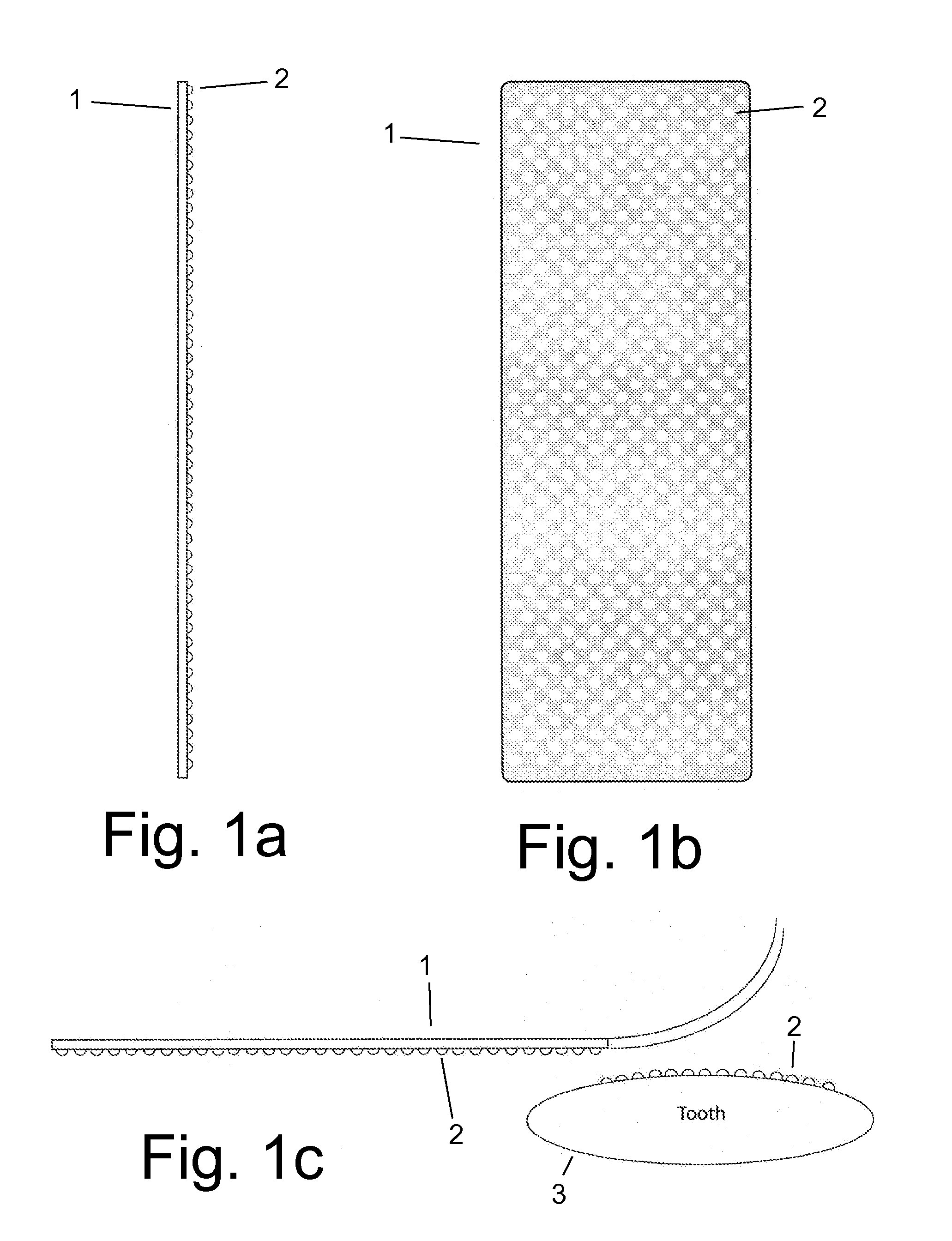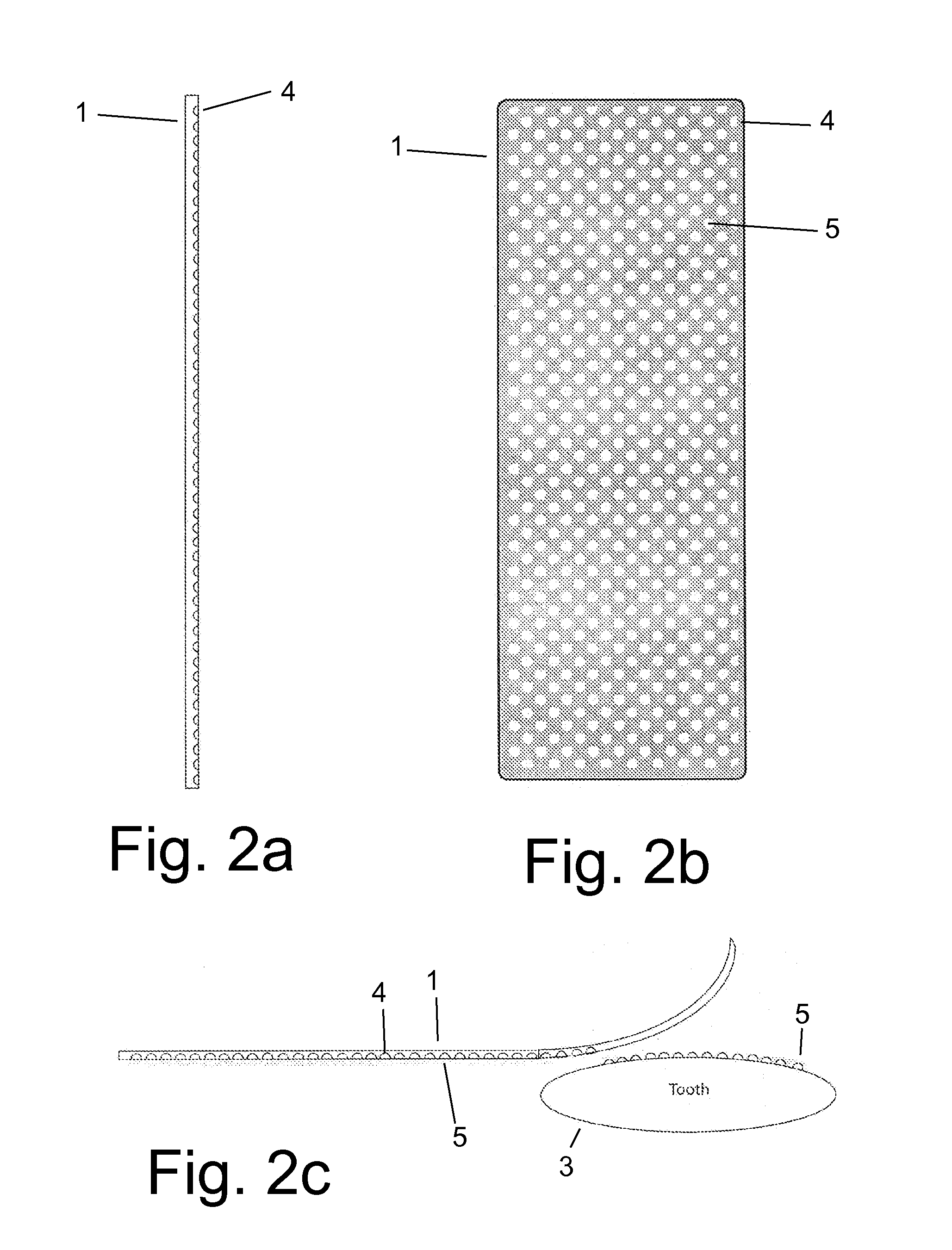Strip for transferring a therapeutic composition to a tooth
a technology a tooth is applied in the field of strip for transferring a therapeutic composition to a tooth, which can solve the problems of increasing the length of time a dental composition remains, increasing the amount of whitening composition within the tray, and increasing the amount of time a tooth composition is removed
- Summary
- Abstract
- Description
- Claims
- Application Information
AI Technical Summary
Benefits of technology
Problems solved by technology
Method used
Image
Examples
example 1
[0079]The following composition was manufactured on a laboratory scale in a planetary mixer (Model DPM-2, Charles Ross & Sons, Hauppauge, N.Y.) as follows:
IngredientPercent (w / w)Deionized water13.690Glycerin40.000Etidronic acid0.500Potassium stannate0.020Hydrogen peroxide 35%42.290Carbopol ® 974P2.000Ammonium Hydroxide 29%to pH 5.0Total100.000
[0080]In a suitable plastic container, combine the water and glycerin, followed by the etidronic acid and Potassium stannate, and mixing until dissolved with a plastic or Kynar®-coated mixing impeller. Add the hydrogen peroxide and mix well. Add the Carbopol® 974P all at once, mix with high agitation for at least one hour to disperse and dissolve the powder. Transfer this mixture to a Kynar®-coated 2-gallon double planetary mixer. Neutralize with ammonium hydroxide (added drop-wise through open sight glass) to a pH of 5.0. Mix under vacuum to remove all traces of entrapped air, then package in plastic containers until ready for further processi...
example 2
[0084]The following non-limiting table outlines the scope of ingredients having utility in the formulation of tooth whitening compositions useful in conjunction with the inventive devices.
PUM
 Login to View More
Login to View More Abstract
Description
Claims
Application Information
 Login to View More
Login to View More - R&D
- Intellectual Property
- Life Sciences
- Materials
- Tech Scout
- Unparalleled Data Quality
- Higher Quality Content
- 60% Fewer Hallucinations
Browse by: Latest US Patents, China's latest patents, Technical Efficacy Thesaurus, Application Domain, Technology Topic, Popular Technical Reports.
© 2025 PatSnap. All rights reserved.Legal|Privacy policy|Modern Slavery Act Transparency Statement|Sitemap|About US| Contact US: help@patsnap.com



